Some movies and shows struggle to deliver creatures that feel real. Instead of impressing viewers, poor CGI can ruin the experience. What should feel thrilling or scary often ends up looking fake. Stiff movements, odd designs, and unfinished effects make it hard for audiences to stay engaged. Many productions rely too much on CGI without getting the details right. When creatures are a key part of the story, bad visuals stand out even more. A poorly designed monster or alien can ruin an otherwise interesting plot. Here is a list of 19 creature chronicles that are hard to watch owing to poor CGI:
1) The Scorpion King (2002)
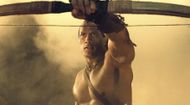
The Scorpion King’s CGI became a textbook example of how poor effects can ruin a climactic moment. The character’s design was overly simplistic, with stiff animations and a glossy finish that made him look more like a video game boss than a fearsome demigod. His sudden transformation into a scorpion-hybrid lacked fluidity, leaving the audience distracted by how fake it looked. Practical effects or better rendering would have helped make the character intimidating instead of laughable.
2) I Am Legend (2007)
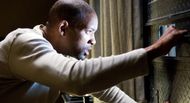
The Darkseekers in I Am Legend were supposed to instil fear, but the over-reliance on CGI robbed them of any sense of realism. Their rubbery skin and exaggerated movements made them look like placeholders instead of terrifying creatures. These flaws undermined key scenes, especially when Will Smith’s character faced off against them. Using prosthetics or motion capture could have added the depth and realism needed to make them scary.
3) Cats (2019)
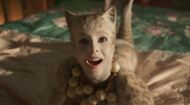
The CGI in Cats turned what could have been a whimsical adaptation into a widely mocked disaster. The human-cat hybrids looked unsettling, with their faces blending poorly into the feline bodies. Movements were stiff and unnatural, which made every dance number feel awkward. The lack of polish on the characters left viewers confused about how the film was even approved for release. Practical costumes with some visual enhancements could have fixed this issue.
4) Green Lantern (2011)
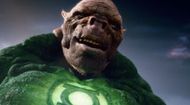
The CGI in Green Lantern made the entire film feel artificial, with Ryan Reynolds’ glowing green suit being the worst offender. The suit, entirely computer-generated, lacked texture and looked pasted onto the actor. The decision to skip practical elements made the visuals feel cheap, which ruined the superhero’s iconic look. Beyond the suit, other CGI-heavy moments like the villain Parallax also felt flat and uninspired.
5) Anaconda (1997)

Anaconda mixed animatronics with CGI, but the latter completely broke the immersion. While the animatronic snake worked well in close-up shots, the CGI version looked clunky and moved in ways that defied logic. Its unnatural motion and glossy texture made it look like a cartoon rather than a threat. These inconsistencies pulled viewers out of the tense scenes and turned a promising creature into something laughable. More consistent use of practical effects or higher-quality rendering would have improved the overall experience.
6) Van Helsing (2004)
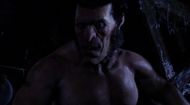
Van Helsing aimed to reimagine classic monsters, but its CGI dragged the film down. The werewolves and Dracula’s brides were key to the story, yet they felt lifeless due to unrealistic rendering and stiff movements. The werewolves lacked texture and weight, making their transformations feel hollow. Dracula’s brides, meant to be alluring and menacing, came across as cartoonish in action sequences.
7) The Adventures of Sharkboy and Lavagirl (2005)
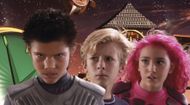
This film relied heavily on CGI to create its dream world, but the execution fell flat. The backgrounds were excessively bright and artificial, resembling a cheap video game rather than a fantasy land. Characters interacted awkwardly with their surroundings, making it hard to stay engaged. Even for a children’s movie, the lack of realism in textures and movement was distracting. Practical sets with minimal CGI enhancements could have made the dream world more immersive.
8) Gods of Egypt (2016)
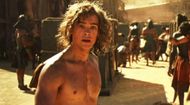
Gods of Egypt heavily relied on CGI for its mythical creatures and large-scale battles, but the quality didn’t match the scale of the story. The creatures lacked realism, with overly smooth textures and exaggerated designs that felt detached from the live-action elements. Action scenes were cluttered with poorly rendered effects that failed to add excitement. A more grounded approach with practical effects or subtle CGI could have helped balance the visuals.
9) Mortal Kombat: Annihilation (1997)

The CGI in Mortal Kombat: Annihilation was outdated even at the time of release. The animality transformations, meant to be climactic, looked amateurish and unrealistic. Characters morphed into creatures with jerky, unnatural movements and designs that felt more cartoonish than threatening. These effects undermined the intensity of the fight scenes and made pivotal moments feel silly. Investing in better CGI or focusing on practical transformations could have salvaged these scenes.
10) Deep Blue Sea (1999)
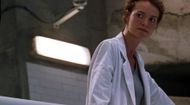
Deep Blue Sea combined practical effects and CGI to bring its sharks to life, but the CGI often broke the tension. While the animatronic sharks looked convincing in close-ups, the CGI versions lacked detail and moved unnaturally. Key scenes, such as the shark attacks, were undermined by unconvincing digital effects that made the sharks feel weightless. These flaws hurt the suspense in a film that relied on fear of its predators.
11) The Hobbit Trilogy (2012-2014)
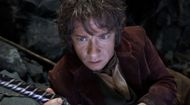
The overuse of CGI in The Hobbit Trilogy significantly hurt its immersive quality, especially when compared to The Lord of the Rings. Orcs like Azog were fully rendered in CGI, making them appear plastic and detached from the world around them. The lack of texture and physicality undermined their menace and made them less memorable than the practical orcs in the earlier trilogy. Practical effects, combined with selective CGI, would have made the characters more lifelike.
12) Alien vs. Predator: Requiem (2007)
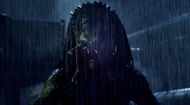
The Predator-Alien hybrid in Alien vs. Predator: Requiem suffered from poorly rendered CGI that completely failed to deliver on its horrifying potential. The creature’s design lacked detail, and its presence felt out of place in dimly lit scenes where it blended awkwardly into the background. These visual shortcomings weakened the suspense and made the hybrid less intimidating. Practical effects or better lighting would have helped showcase the creature’s design.
13) Dragonheart: A New Beginning (2000)
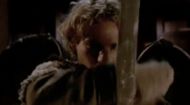
Draco’s CGI in Dragonheart: A New Beginning felt like a massive step backwards compared to the 1996 original. The dragon’s textures and movements were unconvincing, making him look more like a cartoon than a majestic creature. This lack of realism undermined emotional scenes and made the sequel feel cheap and forgettable. The first film successfully used motion capture and detailed rendering, but this instalment’s downgraded effects failed to replicate that charm.
14) Spawn (1997)
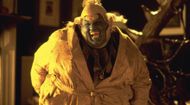
The CGI effects in Spawn were widely criticized, especially the Hell sequences and the Violator demon. Hell looked like a basic video game level, with flat textures and unconvincing fire effects that lacked depth. The Violator Demon was stiff and poorly animated, which made crucial scenes feel awkward instead of terrifying. Practical sets or a mix of animatronics and better CGI would have helped these moments stand out.
15) The Lawnmower Man (1992)

While groundbreaking in 1992, the CGI in The Lawnmower Man has aged poorly. The digital landscapes and characters, meant to represent virtual reality, now look crude and simplistic, lacking the sophistication needed to hold up over time. The film’s ambition to showcase cutting-edge technology was admirable, but its execution fell short as the visuals quickly became outdated. Practical effects or a subtler approach to VR might have aged better.
16) Justice League (2017)
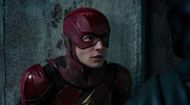
The CGI removal of Henry Cavill’s moustache in Justice League became a major distraction, with his upper lip looking unnatural in multiple scenes. The rushed effects made it hard for viewers to focus on his performance. Additionally, Steppenwolf’s design lacked texture and depth, making him look more like a generic video game villain than an imposing threat. These issues pulled viewers out of the film’s most important moments.
17) The Polar Express (2004)
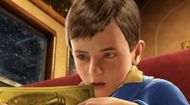
While ambitious, The Polar Express struggled with CGI characters that fell deep into the uncanny valley. The human-like faces were lifeless, with stiff movements and blank stares that felt unsettling rather than endearing. This made it hard for audiences to connect emotionally with the characters, especially in scenes meant to feel heartwarming. Practical motion captured with more attention to facial realism could have improved the experience.
18) King Kong (1976)
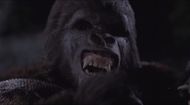
King Kong (1976) pushed creature effects forward for its time, but Kong’s movements and facial expressions fell short in some sequences. The animatronics lacked fluidity, making the gorilla appear mechanical and detached from the world around him. Close-ups of Kong’s face often fail to convey emotion, weakening the impact of his key interactions with other characters. Improvements in animatronic detail or stop-motion techniques could have enhanced the realism.
19) Jupiter Ascending (2015)
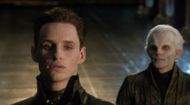
The CGI creatures in Jupiter Ascending, particularly the half-human, half-beast hybrids, felt poorly integrated into the film. Their designs were overly exaggerated, and their interactions with live-action characters often appeared unconvincing. The lack of realistic textures and weight made them look cartoonish in a story that relied on visual spectacle. These issues detracted from the film’s world-building and made pivotal scenes feel hollow.
Love movies? Try our Box Office Game and Movie Grid Game to test your film knowledge and have some fun!
